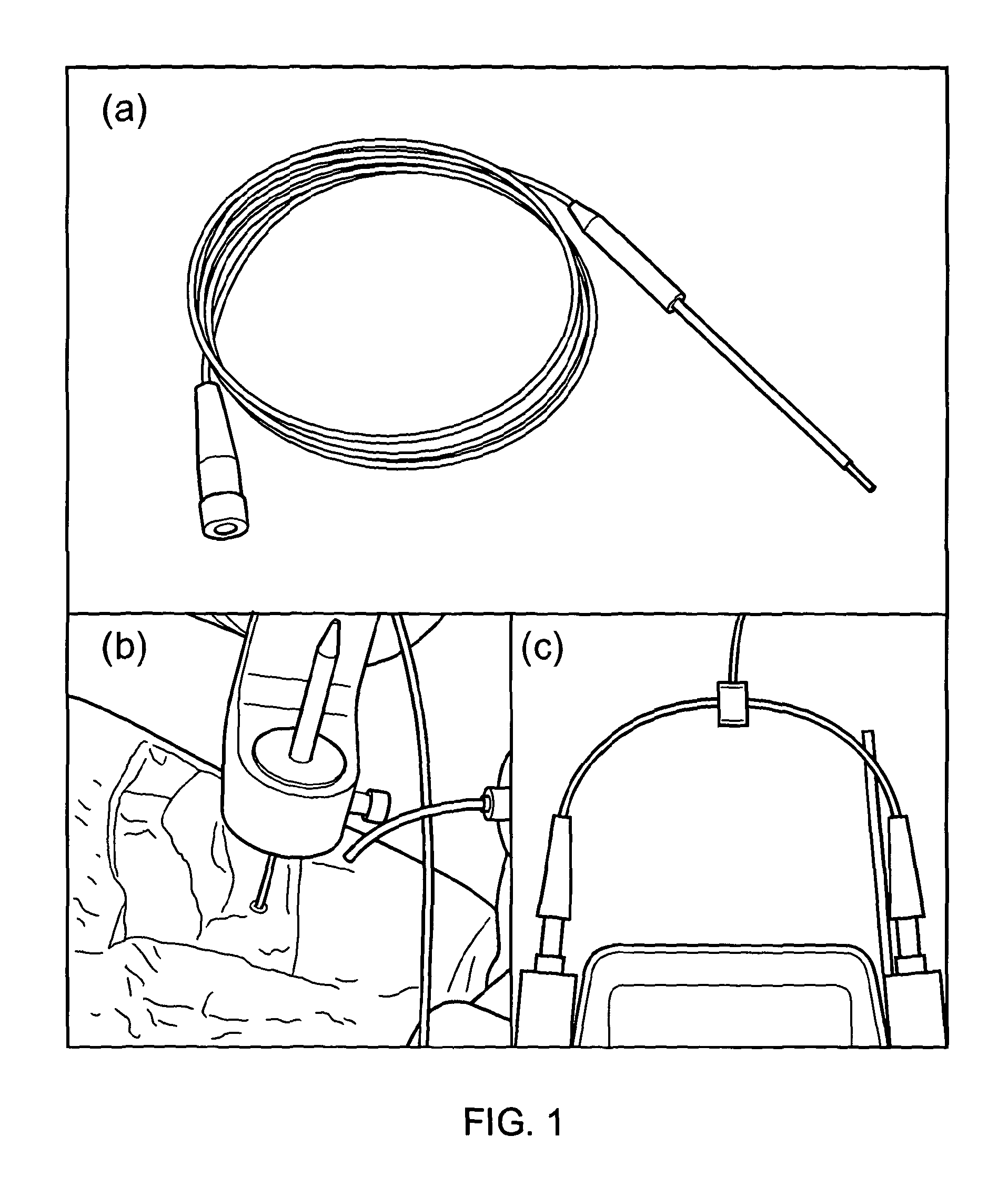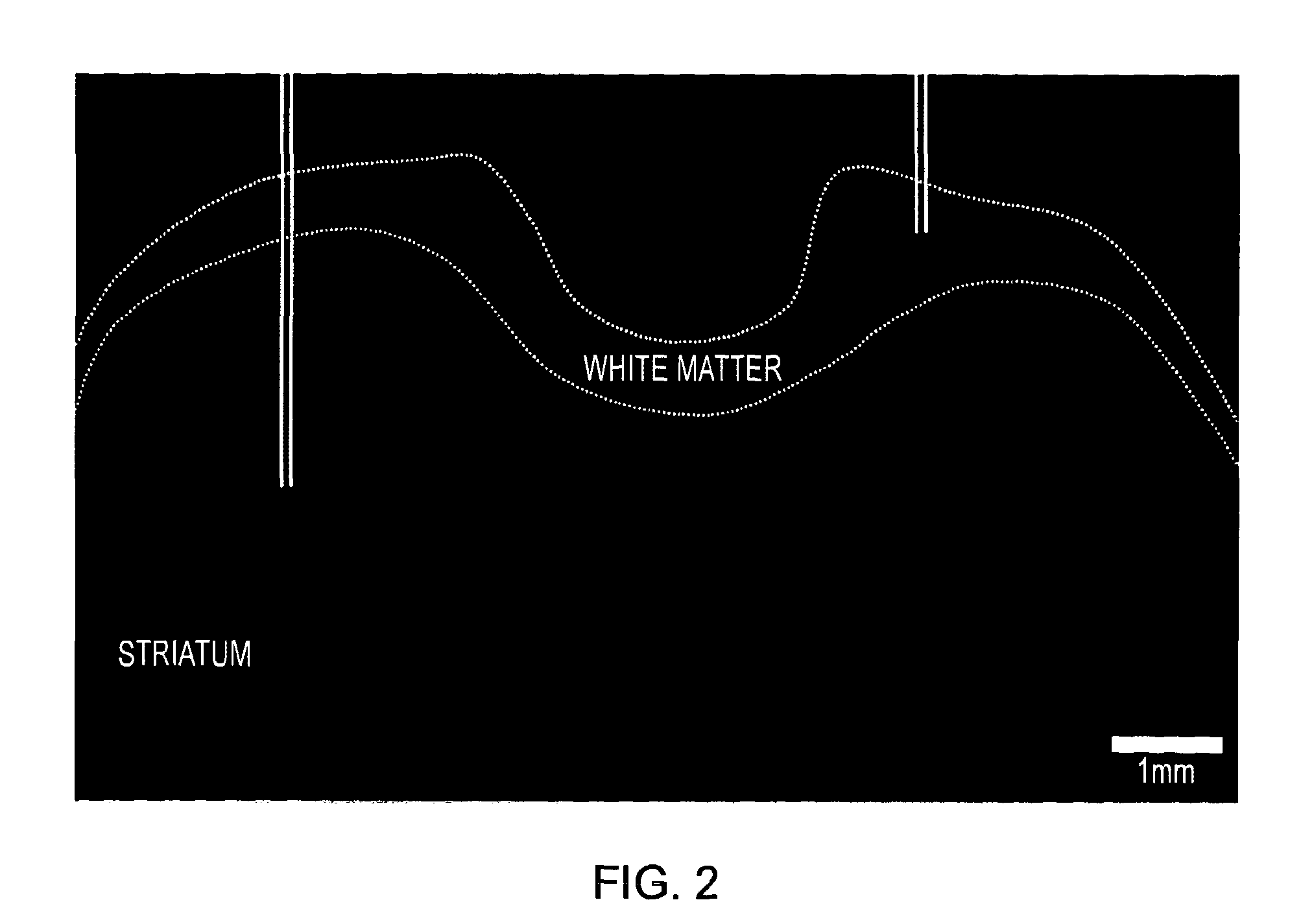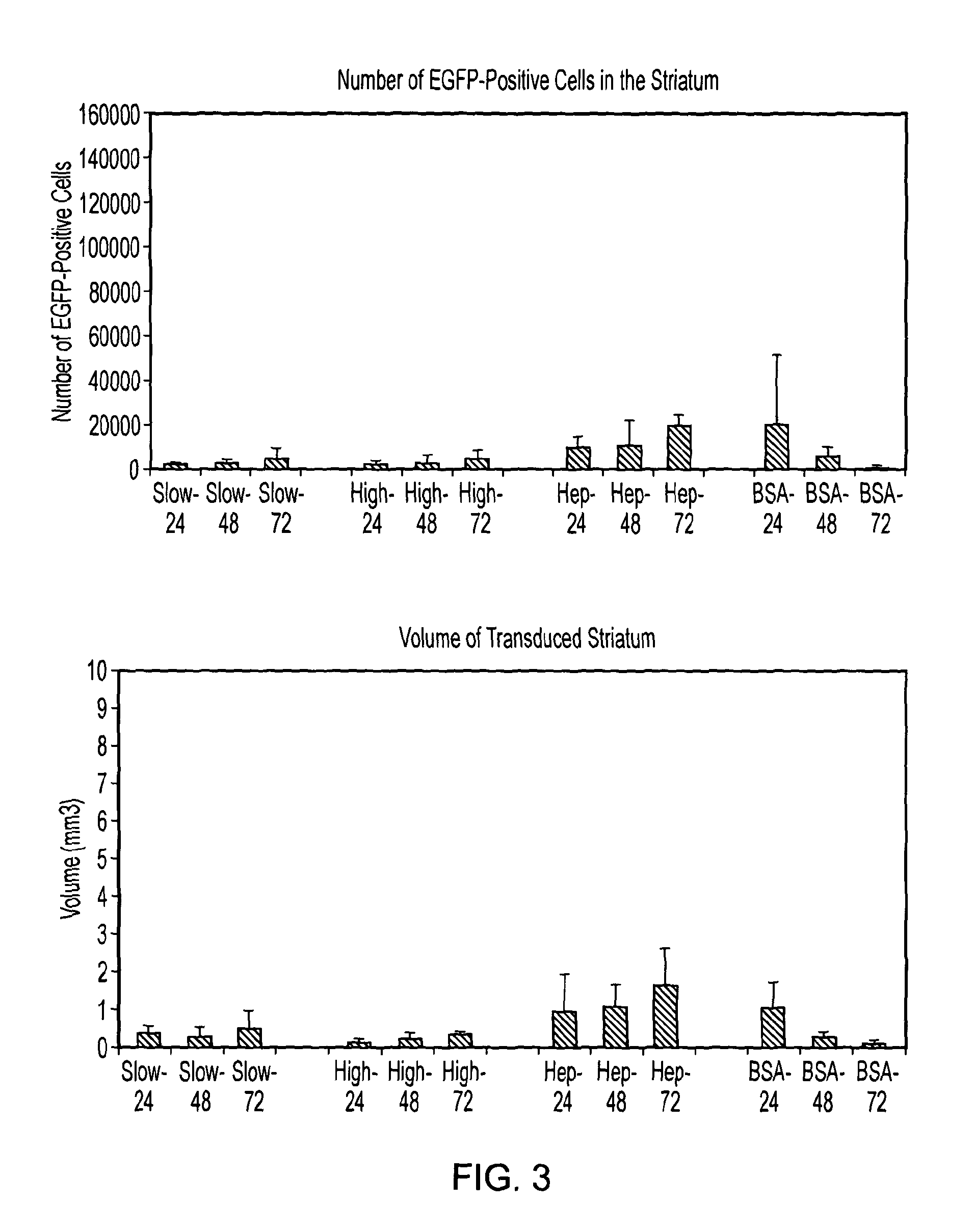Delivery of a gene therapy vector to the brain by convection-enhanced delivery
a gene therapy and brain technology, applied in the direction of dsdna viruses, drug compositions, peptide/protein ingredients, etc., can solve the problems of large tissue damage and negligible cell transduction, large haemorrhage, and difficulty in achieving the therapeutic concentration of chemotherapeutics in the brain without causing toxicity, so as to increase the proportion of hsv available for transduction, reduce the binding of hsv to the receptor, and mov
- Summary
- Abstract
- Description
- Claims
- Application Information
AI Technical Summary
Benefits of technology
Problems solved by technology
Method used
Image
Examples
Embodiment Construction
[0033]The invention will now be described by way of example only, with reference to the following figures in which:
[0034]FIG. 1 shows the pig infusion device.
[0035]This device was constructed from a series of zirconia tubes (a). Inside these tubes there was a length of fused silica (outer diameter of 220 μm and an inner diameter of 150 μm) protruding 3 mm from the distal end. This fused silica extended proximally from the rigid cannula through a flexible length of tecothane tubing to the 3-way connector. FIG. 1b shows the cannula inserted through the stereo-guide of a Pathfinder stereotactic robotic arm, through a small burr-hole and into the brain. FIG. 1c demonstrates the 3-way connector attached to two glass Hamilton syringes placed in a syringe driver.
[0036]FIG. 2 shows Tissue Damage from HSV-1 Infusions.
[0037]Representative coronal histological section demonstrating damage in the striatum (left) and white matter (right) following an infusion of HSV-1. Solid white lines represen...
PUM
| Property | Measurement | Unit |
|---|---|---|
| diameter | aaaaa | aaaaa |
| diameter | aaaaa | aaaaa |
| diameter | aaaaa | aaaaa |
Abstract
Description
Claims
Application Information
 Login to View More
Login to View More - R&D
- Intellectual Property
- Life Sciences
- Materials
- Tech Scout
- Unparalleled Data Quality
- Higher Quality Content
- 60% Fewer Hallucinations
Browse by: Latest US Patents, China's latest patents, Technical Efficacy Thesaurus, Application Domain, Technology Topic, Popular Technical Reports.
© 2025 PatSnap. All rights reserved.Legal|Privacy policy|Modern Slavery Act Transparency Statement|Sitemap|About US| Contact US: help@patsnap.com



